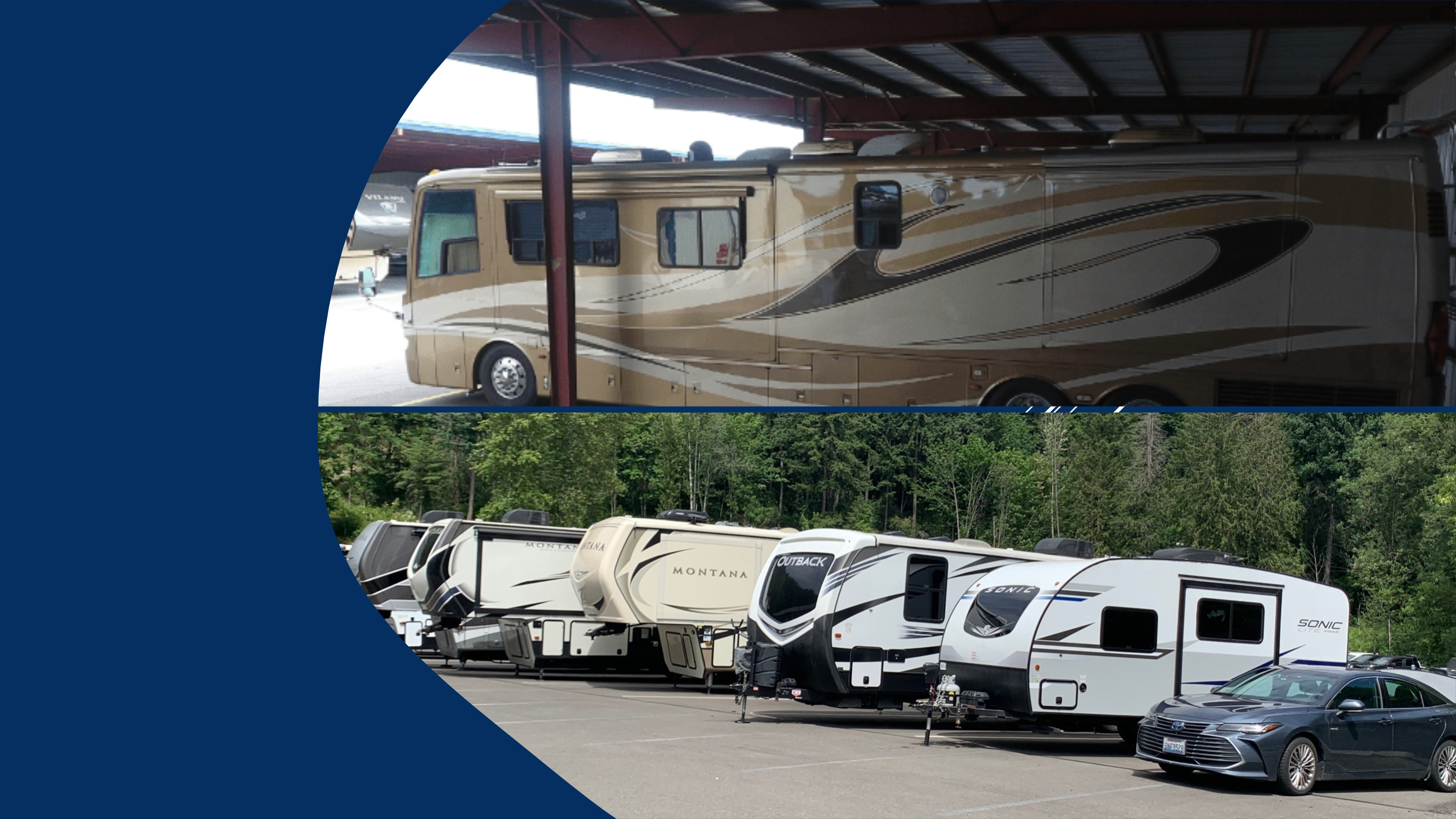Comparison of RV Storage Types:
| Feature | Outdoor RV Storage | Covered RV Storage | Enclosed RV Storage | Climate-Controlled RV Storage |
|---|---|---|---|---|
| Protection from Elements | Limited | Partial | Comprehensive | Comprehensive |
| Security | Basic | Basic | Enhanced | Enhanced |
| Surfacing | Gravel / Paved | Often Paved | Paved | Paved |
| Assigned Parking Spots | Not always | Yes | Yes | Yes |
| Temperature Regulation | No | No | No | Yes |
| Humidity Control | No | No | No | Yes |
| Electric Service | Limited | Seldom | Some facilities provide | Some facilities provide |
| Onsite Staff | No usual | Some facilities provide | Some facilities provide | Some facilities provide |
| Additional Amenities | Limited | Limited | Limited | Some facilities provide |
| Cost | Lowest | Moderate | Higher | Highest |
Introduction:
When it comes to storing your valuable recreational vehicle (RV), choosing the right storage option is crucial to ensuring its longevity and protection. RV storage facilities offer various types of storage options, each with its own set of features and benefits. In this article, we will explore the key differences between outdoor, covered, enclosed, and climate-controlled RV storage, helping you make an informed decision to keep your cherished RV safe and secure.
Outdoor RV Storage:
Outdoor RV storage refers to the most basic and affordable storage option available. As the name suggests, it involves parking your RV in an open area within the storage facility. Outdoor storage typically features wide parking spaces designed to accommodate large vehicles like RVs. However, it’s important to note that some cheaper outdoor facilities may have gravel surfacing instead of paved surfaces, which can make maneuvering your RV slightly more challenging.
Outdoor storage offers easy access and convenience but provides minimal protection against the elements. Your RV is exposed to weather conditions such as rain, sun, wind, and snow, which can lead to wear and tear over time. Outdoor RV storage is the most cost-effective option among the different types, making it an attractive choice for budget-conscious RV owners. See also How To Save Money By Using Outdoor RV Storage

Covered RV Storage:
Covered RV storage provides a step up from outdoor storage by offering a protective roof structure. This type of storage is often an open-sided structure, such as a carport or awning, that shields your RV from direct sunlight, rain, and snow. Covered storage offers partial protection against the elements while still allowing for ventilation. It helps to reduce sun damage, prevents water accumulation on the roof, and provides some shade.
Covered RV storage generally features a paved surface for easier maneuvering of your RV. Similar to outdoor storage, covered storage may not always offer assigned parking spots. Covered RV storage is a moderately priced option, offering a balance between affordability and enhanced protection.
Enclosed RV Storage:
Enclosed RV storage takes security and protection a step further by providing a fully enclosed structure. This type of storage offers four walls and a roof, similar to a garage. Enclosed storage provides excellent protection against the elements, including rain, snow, wind, and sunlight. It also offers a higher level of security by restricting unauthorized access.
Enclosed storage facilities typically have paved surfaces and often provide assigned parking spots, making it easier to navigate and locate your designated area. Due to the added protection and security features, enclosed RV storage tends to be more expensive compared to outdoor and covered storage.
See also Indoor RV Storage: The Ultimate Guide for 2023
Climate-Controlled RV Storage:
Climate-controlled RV storage is the most advanced and comprehensive storage option available. This type of storage ensures that your RV is stored in a controlled environment with regulated temperature and humidity levels. Climate-controlled facilities typically feature insulated units equipped with HVAC systems, ensuring a consistent and optimal environment for your RV.
This type of storage is particularly beneficial for protecting sensitive components and materials inside your RV, such as electronics, upholstery, and appliances. Some climate-controlled RV storage facilities go beyond the basic features and offer additional amenities such as electric service, allowing you to keep your RV batteries charged and appliances running even while in storage. Additionally, some facilities may have onsite staff, including managers, who can provide assistance and ensure the smooth operation of the facility.
Conclusion – RV Storage Comparison:
Choosing the right type of RV storage can significantly impact the condition and longevity of your vehicle. Whether you opt for outdoor, covered, enclosed, or climate-controlled RV storage, ensure that the facility provides reliable security measures, convenient accessibility, and competitive pricing. Safeguarding your RV in the right storage facility will provide peace of mind and help preserve its value for years to come.

2 responses to “Outdoor vs. Covered vs. Enclosed vs. Climate-Controlled RV Storage: A Comparison”
Excellent info!! Very useful. Do you have a FAQ section in the works? Or an open Q&A ? Would love to see others’ questions
Thanks for reaching out and the encouraging words. We don’t have a FAQ section at the moment, but will definitely consider adding. Thanks again.
Can I just say what a relief to search out someone who actually is aware of what theyre speaking about on the internet. You positively know how one can bring a difficulty to mild and make it important. Extra people have to read this and perceive this side of the story. I cant imagine youre not more common since you definitely have the gift.